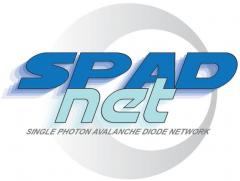Jun 13 2013
“Fully Networked, Digital Components for Photon-starved Biomedical Imaging Systems” – is a collaborative research project funded by the European Union within the Information and Communication Technologies (ICT) Theme of its Seventh Research Framework Programme (FP7).

The project, launched on July 1st, 2010, is coordinated by EPFL and it includes seven leading European experts in image sensors, medical imaging, and photonics. SPADnet was granted 3,700,000 EUR of funding over a 42 month period.
The first results from the SPADnet project (http://www.spadnet.eu/) are scheduled to be presented at the London Image Sensors conference on Mar 21st, 2013 (http://www.image-sensors.com/).
SPADnet aims to innovate in several areas of the Positron Emission Tomography (PET) system: primarily in optical coupling techniques, single-photon sensor architectures, and intelligent ring networks. The SPADnet system design is based on the first computational model enabling to study the full chain from gamma photons to network coincidence detection through scintillation events, optical coupling, etc.
The first version of the SPADnet photosensor, a fully digital CMOS SiPM (Silicon PhotoMultiplier) with 8×16 pixels individually capable of photon time stamping and energy accumulation, has recently been fabricated. The sensor also provides a real-time output of the total detected energy at up to 100Msamples/s and on-chip discrimination of gamma events. These events can then be routed to the SPADnet ring network, a 2 Gbps network that provides real-time processing and coincidence determination. This architecture simplifies the construction of the overall system and allows the scaling of the system to larger arrays of detectors, thus prompting for potentially better and faster image reconstruction.
In the IS 2013 talk we will show the first experimental results from the SPADnet sensor, along with the main project achievements in optimization of scintillation coupling, fill factor recovery through nano-imprinted optical concentrators, Gbps network, and reconstruction issues. A novel characterization technique based on single point laser excitation of the scintillator provides new insight into the sensor’s capabilities.
The impact of SPADnet is not only on PET scalability, performance and cost, but also on the capability of being compatible with magnetic resonance imaging (MRI). The combination of these two powerful techniques will give the medical community new and more effective tools for medical diagnostics.